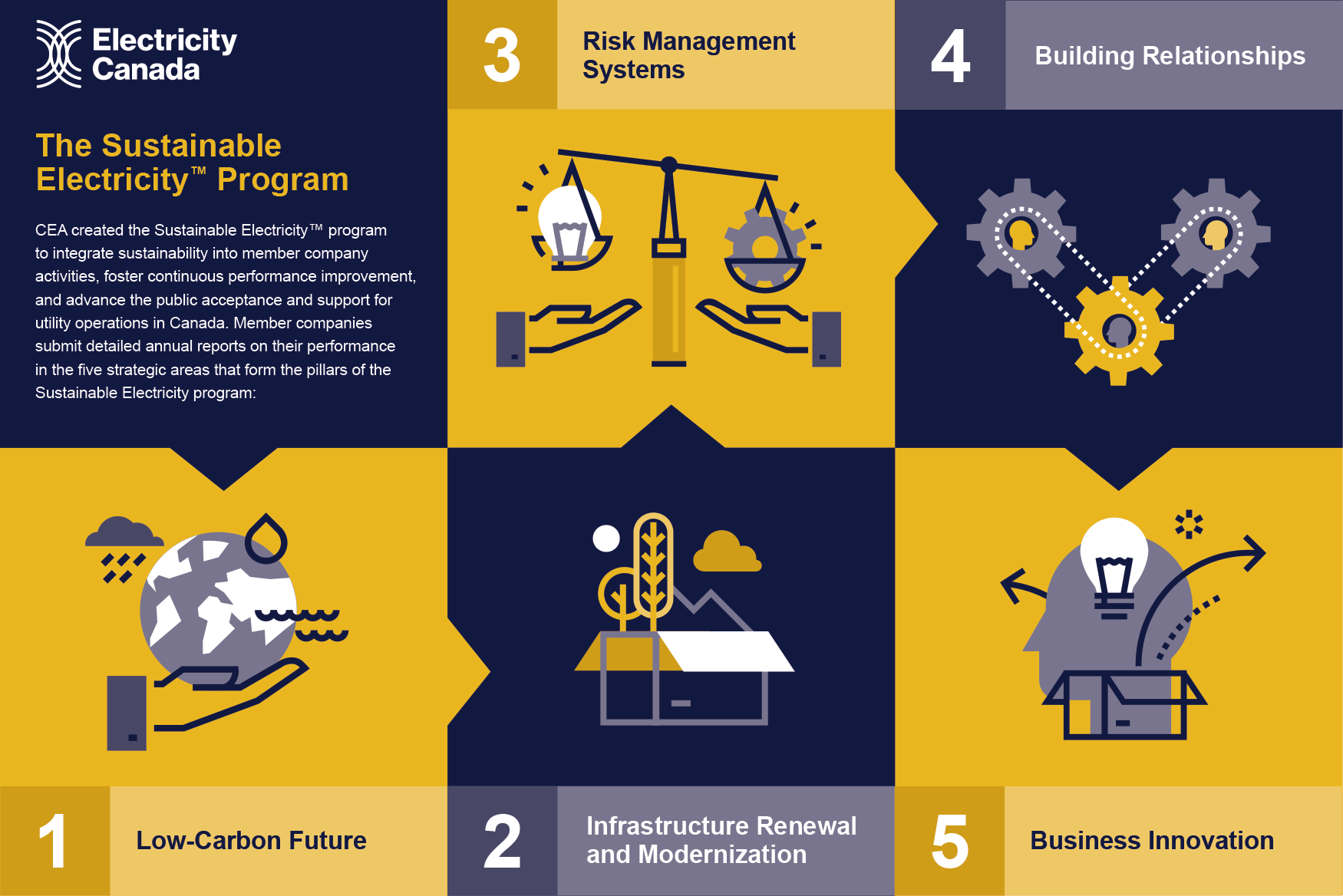The program promotes the integration of sustainability in business decision-making and continuous performance improvement of Electricity Canada members. Members are trusted to provide energy services to current and future customers in an environmentally sustainable, safe, reliable, and cost-effective manner.
Sustainable Development is supported by these five pillars:

Foundational Elements
While the Sustainable Electricity™ Program is responsive to the diversity of its membership, the program is founded on the following elements:
- All Members agree and adhere to the Sustainable Development – Corporate Responsibility Policy
- All Members report on their Sustainable Electricity™ key performance indicators, which are synthesized in an annual report
- Individual company sustainability performance is verified
- A Public Advisory Panel provides feedback on the members’ sustainability performance
- Five pillars of Sustainable Development
Goals of the Sustainable Electricity™ Program
Integrate sustainability
Integrate and embed sustainability within company operations and business models.
Continuous improvement
Continuously improve environmental, social, and economic performance to meet our collective vision through innovative solutions, management approaches, and best practices.
Public acceptance and support for utility operations
Advance the public acceptance and support for utility operations through meaningful engagement, collaboration, transparency, and accountability.
Principles of the Sustainable Electricity™ Program
Environmental stewardship
Manage facilities and operations through a risk-based approach that avoids or minimizes impacts on the environment (air, land, and water) and supports ecosystem protection and conservation of biological diversity.
Climate change mitigation and adaptation
Mitigate greenhouse gas emissions from facilities and operations, and adapt to the adverse effects of climate change on electricity infrastructure.
Employee, contractor, and public health and safety
Provide a safe and healthy workplace for employees and contractors, and promote public safety.
Human resources and workplace
Support fair recruitment, training, and talent retention processes that meet the needs of company operations while ensuring on-going employee satisfaction, well-being, and diversity.
Stakeholder engagement and transparency
Communicate and engage with stakeholders and partners in an open and transparent manner for all proposed and established operations and activities.
Indigenous engagement
Build mutually-beneficial relationships with Indigenous Peoples and communities based on trust and respect.
Economic value and community investments
Provide economic benefits to shareholders, communities, and regions in which companies operate.
Electricity demand, efficiency, and conservation
Produce, deliver, and use electricity in an efficient manner while promoting energy conservation programs, including for low-income customers, as applicable to company operations.
Infrastructure renewal and modernization
Invest in the renewal and modernization of generation, transmission, and distribution systems to meet the current and future energy needs of customers in a safe, reliable, and cost-effective manner.
Business model pressures
Engage and work collaboratively with utility regulators, policy-makers, stakeholders, technology providers, and supply chain partners to meet evolving customer expectations and business requirements.
Supporting Elements
Standards implementation
All Members must have an Environmental Management System consistent with ISO 14001:2004. No external registration is required.
Verification
All Members must undergo verification of their performance once every four years.
Together, Electricity Canada and their membership are committed to sustainable development, which is defined as:
Pursuing progressive business strategies and activities that meet the needs of the present, while enhancing the environmental, social, and economic resources that will be needed in the future.

